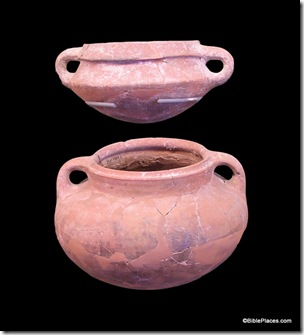Haaretz has an interesting story this weekend on the work of a ceramics restoration specialist in the Israel Antiquities Authority. Her job is to put Humpty Dumpty back together again.
Many years before the corruption allegations, something entirely different was uncovered at the Holyland project site in Jerusalem: traces of several ancient communities, including shards of two clay vessels. The piles of potsherds were delivered to the table of Elisheva Kamaisky, a ceramics restoration specialist for the Israel Antiquities Authority, who reconstructed the jugs in a gentle work of piecing together a complex jigsaw puzzle.
“I love the earliest periods because they didn’t use tools then. No two vessels are the same. I’m full of awe in front of their technical abilities. In the Roman period mass production starts, and then if you’ve seen one vessel you’ve seen them all,” she says. “The beautiful thing about ceramics is that the same techniques are used today. True, we have electric furnaces and control the heat better, but the basics are the same in the most ancient jug and the ceramics NASA uses to coat its spaceships.”
Kamaisky is one of the Antiquities Authority’s six-member restoration team who reconstruct objects and implements of the material culture in the country since human habitation began. They receive potsherds, threadbare cloths, metallic weapons, golden coins, delicate glassware and more. Unlike their colleagues in the rest of the world, Israeli law bars them from working with human remains.
Archaeologist Zvika Greenhut says restoration work is important “because it’s the only way you can see the entire picture. For example, in one dig I worked on in Motza we found a room full of pitcher shards. But only when we started piecing them together did we understand that the room couldn’t possibly hold all these vessels. There were two possibilities: Either they were all stored one inside each other, or there were shelves that held them but didn’t survive into our time. It was clearly a storeroom and this means something about that culture.”
The full story is here.
HT: Joe Lauer
